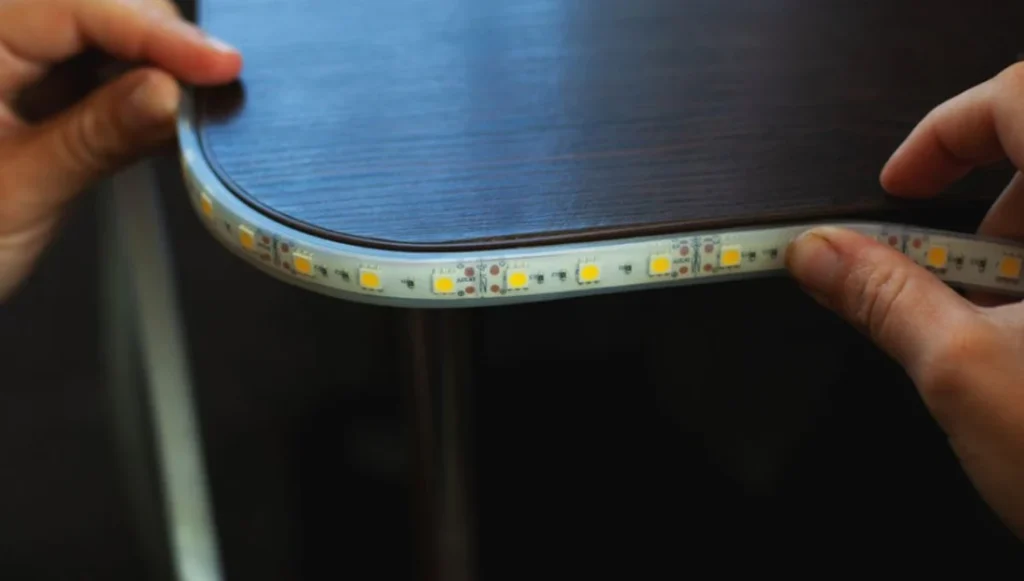Lighting plays a key role in shaping the mood and functionality of any space. Whether you are working on interior decorative lighting or outdoor sign illumination, using LED Strip Lights alongside LED Modules offers a flexible and efficient solution. By understanding how these two components work and where they perform best, you can build a lighting system that is both practical and visually pleasing.
Advantages of LED Strip Lights
LED strip lights are long, flexible strips packed with light-emitting diodes (LEDs). Their flexibility lets you wrap them around corners, tuck them under shelves, or mount them along ceilings. One major advantage is their uniform glow: they spread light evenly rather than in points, which helps in creating soft ambient lighting.
Another benefit is energy efficiency. LED strip lights consume relatively low power compared to traditional lighting, making them ideal for decorative lighting that stays on for long periods. Their ability to run on low-voltage power sources also simplifies installation and reduces energy waste.
These strips come in various color temperatures from warm white to cool white as well as RGB options. This lets you choose lighting that fits your environment: warmer strips for cozy corners and cooler or colored strips for dynamic accents. In addition, many strip lights are dimmable, giving you control over the brightness.
Because they are thin and flexible, LED strip lights work well in tight or unusual spaces. You can install them under kitchen cabinets, along stairwells, or behind TVs to create backlighting. The modular design makes them easy to cut and customize for your space, minimizing waste.
Benefits of LED Modules
LED modules are compact clusters of LEDs mounted on rigid boards or housings. They are often used for applications where precise, directed light is needed for example, in signage, channel letters, or architectural accent lighting. Unlike a continuous strip, each module emits a strong point of light, which makes them useful when you need brightness focused on specific spots.
Durability is a big advantage of LED modules. They are typically designed to be weather-resistant, which means they can work reliably in outdoor signage and facade installations. Their rigid structure also makes them more robust than flexible strips, especially in environments exposed to vibration or impact.
Another benefit is brightness control: modules can be arranged in tight grids to produce intense light, or spaced out for subtle patterns. This flexibility helps you adjust light density according to design needs. Powering modules is straightforward many run on low-voltage DC power, making wiring simpler.
Finally, LED modules often have long lifespans and consistent output. Since each module is a discrete unit, if one fails, it is easier to replace without changing the entire lighting system.
How to Choose Between Strip Lights and Modules
When deciding whether to use LED strip lights or LED modules, think about your project goals and constraints:
- Function: Do you need ambient, flowing light, or strong, directional illumination? Use strip lights for continuous, soft lighting; choose modules for bright, concentrated light.
- Space: In tight or curved spaces, strip lights offer flexibility. In fixed, flat areas, modules may be more stable.
- Durability: For outdoor or industrial settings, modules may be more reliable due to their rigid design.
- Brightness: Estimate how much light you need per square meter. Modules typically output more per unit than a thin strip.
- Power and installation: Check voltage requirements, power supply capacity, and wiring complexity.
- Maintenance: Plan how easy it will be to replace parts. Modules are usually simpler to swap out.
By carefully weighing these factors, you can choose the right mix for your lighting project.
Practical Applications: Combining Both
One of the most powerful ways to use LED lighting is to combine strip lights and modules together. Here are some practical examples:
- Retail Shelves: Use strip lights under shelf edges to highlight merchandise, and place modules on vertical sign panels to create a clear and bold store identity.
- Backlit Signage: Use LED modules inside channel letters for brightness, and run strip lights around edges for a halo glow.
- Living Spaces: Mount strip lights under furniture or cabinets for ambient lighting, while using modules to highlight artwork or architectural details.
- Outdoor Pathways: Line walkways or garden borders with strip lights, and highlight plants, walls, or fence posts with LED modules for spots of accent light.
By combining both types, you gain design flexibility and energy efficiency. Each component supports the other without redundancy.
Conclusion
Using both LED Strip Lights and LED Modules gives you a versatile toolbox for modern lighting design. Strip lights provide flexible, continuous lighting; modules deliver bright, focused points of light. When chosen correctly and placed thoughtfully, they help you build lighting systems that are efficient, long-lasting, and visually balanced. Whether for home interiors, retail displays, or outdoor signage, blending strip lights and modules enables you to meet both functional needs and aesthetic goals.


